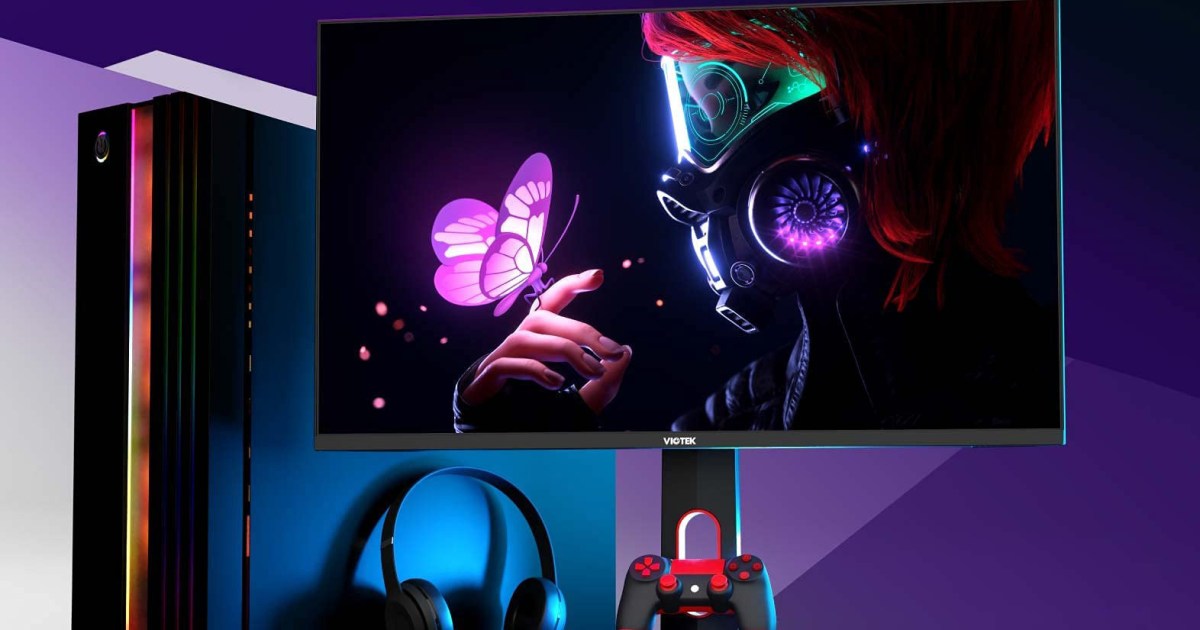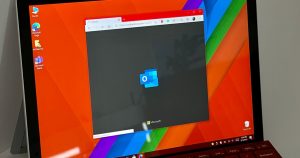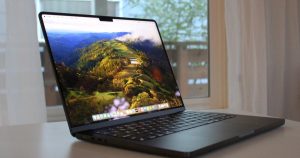IPS and VA shows are two of essentially the most usual and enduring LCD show sorts, with years of worth in state of the art screens and televisions, and so they’re nonetheless competing with the likes of modern OLED displays lately. They’ve been enhanced through the years, with the actual generations of Tiny-LED backlighting serving to LCDs stay aggressive and outputting improbable sunny and distinction, with sooner refresh charges and reaction occasions than ever sooner than.
However for those who’re having a look to shop for any such more-traditional show sorts, with an In-plane switching (or IPS) or Vertical Alignment (or VA) TV or track, which will have to you select? There are benefits and drawbacks to each and every, so let’s pull a better have a look at them each to look which may well be best for you.
Colour accuracy and protection
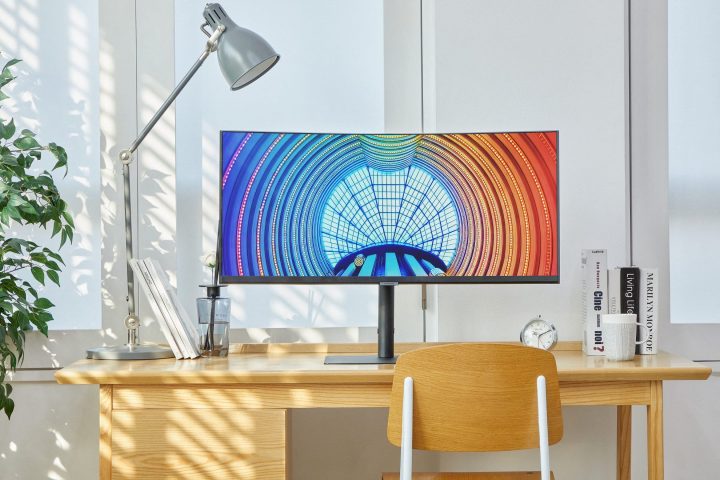
IPS panels have historically been worn for making shows that experience top colour accuracy and massive protection of large colour gamuts like DCI-P3 or Adobe sRGB. Now not best do IPS shows generally glance excellent, however in addition they glance excellent from wider angles, so that you don’t want to glance precisely head on at an IPS track to get correct colours.
Colour accuracy and protection will also be excellent on VA shows (even at large angles), however colours throughout VA shows aren’t all the time uniform. Relying at the viewing attitude and the space between the viewer and the show, the middle of VA screens steadily have extra gamma than the perimeters of the display, making colours much less correct.
Even supposing IPS is typically higher than VA in the case of colour accuracy and protection, VA panels have completely tremendous colour accuracy and protection for the immense majority of customers. Most effective skilled photograph and video editors may just in reality be disenchanted with a VA track that best covers 90% of the DCI-P3 colour field, which is if truth be told an excellent quantity of protection for avid gamers and content material shoppers.
Distinction ratio

Distinction ratio measures how dull the colour dark is depicted on a show, deliberate as a ratio of x:1. The upper x is, the simpler. Even supposing IPS is excellent with colour accuracy normally, it in reality struggles with making the colour dark, or even the most efficient IPS screens and TVs can best display an overly dull gray instead than true dark. Maximum IPS screens are rated at a 1000:1 distinction ratio, which isn’t severe however isn’t splendid both. Some screens can be on one?s feet to round 2000:1 on the other hand.
Regardless of VA’s basic colour accuracy problems, it’s if truth be told superb at depicting dark as actually dark. Even the worst VA shows can simply muster a 2000:1 distinction ratio, and a few will also succeed in upper than 5000:1. If truth be told, VA is second only to OLED when it comes to contrast ratio, and OLED if truth be told delivers easiest distinction ratios of ∞:1. As a result of this, a VA show can glance higher than an IPS counterpart in darker scenes.
Some shows can spice up distinction ratio via the usage of native dimming and HDR. Via the usage of a extra complicated backlight with more than one LEDs that may be grew to become on or off, native dimming is helping IPS and VA shows glance even darker when it issues. At the alternative finish of the spectrum, HDR boosts sunny for colours that want it. With those two elements mixed, some shows can spice up the distinction ratio considerably. On the other hand, those options aren’t taking to build an IPS show’s distinction ratio as excellent as the common VA show’s, and poorly carried out native dimming can backfire via developing extra optical issues than it solves.
Reaction day
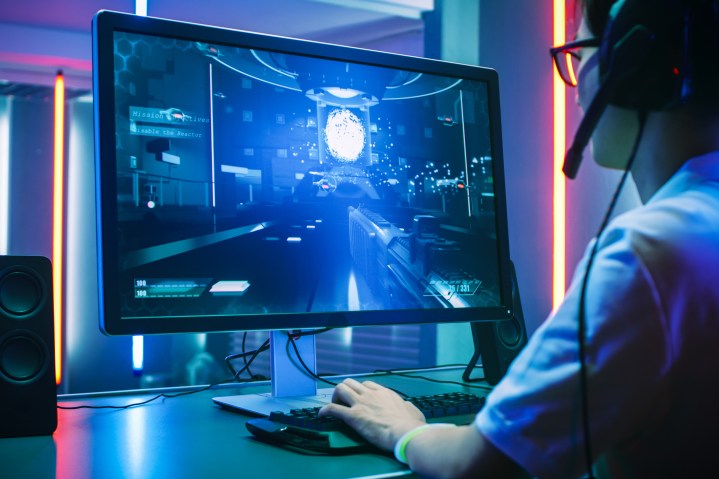
Reaction day is the quantity of day it takes to totally refresh the show and display a brandnew symbol. That is an department the place each IPS and VA effort, however these days excellent IPS shows have conquer standard problems with reaction occasions, and VA shows have no longer proven the same quantity of travel. There is not any usual that show producers adhere to in the case of measuring reaction day, however according to BenQ, which makes each IPS and VA screens and TVs, IPS will have a reaction day of 1-2ms while VA can best succeed in 4-5ms. The particular values right here aren’t noteceable as a result of this can be a best-case state of affairs. What’s in reality noteceable is that VA is way slower.
Very top reaction occasions may end up in very animated scenes having a look blurry and smeared. This factor is known as ghosting, and it’s specifically anxious for discerning avid gamers taking part in fast paced video games like Counter-Collision: World Offensive. Each IPS and VA shows have answers and workarounds to keep away from ghosting, essentially the most noteceable being overdrive. Overdrive that’s too competitive could cause opposite ghosting, which is when the show tries to modify a pixel’s colour so briefly that it unintentionally overshoots and finally ends up with the incorrect colour for a couple of frames. Ghosting and opposite ghosting each reason smearing, so if overdrive is simply too susceptible or too robust, the result is matching: It seems sinful.
Even supposing the most efficient IPS panels beat the most efficient VA panels in the case of reaction day, there are enough of IPS shows that experience very sinful reaction occasions. It’s additionally significance noting that reaction day best must be equivalent to the refresh charge of the track for there to be disagree smearing. On a 60Hz show, as an example, it takes 16.66ms to turn a brandnew symbol, so a reaction day of 1ms doesn’t in reality do a lot. Reaction day issues a lot more at upper refresh charges, or even at 144Hz a reaction day of round 7ms is adequate to keep away from ghosting.
Refresh charge
IPS is able to considerably upper refresh charges than VA. IPS is capable of hitting 500Hz generation VA caps out at 240Hz. On the other hand, the immense majority of VA shows are best able to 144Hz or 165Hz; there are just a few VA screens that may do 240Hz. For the ones in need of extraordinarily top refresh charges, IPS is the cloudless winner.
Despite the fact that VA used to be able to 360Hz on the other hand, it most probably wouldn’t be excellent as a result of its sickness in reaction occasions. A 360Hz show refreshes each 2.7ms, which is easily underneath what VA is typically able to.
Which is healthier?
Occasion IPS shows are generally a preserve advice for many family, now and again there are excellent causes to shop for VA screens and TVs. VA has discovered its house in midrange gaming screens, gaming TVs, and ultrawide shows, and lots of the best gaming monitors worth VA. In the event you’re buying groceries out of doors of those divisions, on the other hand, you most likely gained’t have to fret about opting for between IPS and VA as a result of VA isn’t very steadily worn in different places.
In the event you do have the selection between VA and IPS, you’re taking to have to judge what you favor in a show, and also you will have to certainly learn some track evaluations simply to build certain if VA or IPS goes in order what you need to your then show acquire. Nearest all, even an IPS show will have sinful colour accuracy or sinful reaction day, so don’t suppose IPS approach constituent and that VA approach price range.
It’s significance taking into consideration OLED, too. Occasion IPS and VA LCD panels usually are brighter than their OLED opposite numbers, the actual generations of QD-OLED displays from the likes of Samsung and Alienware are stellar. Fascinated about simply optic what the most efficient shows are at this time? Listed below are our favorite monitors, and top TVs of the occasion up to now.
Editors’ Suggestions
-
Best Apple Studio Display deals: Save $100 on 5K monitors -
The best 5K monitors you can buy for max resolution -
Air cooling vs. liquid cooling: Which is best for your PC in 2024? -
Your next Mac monitor could have this genius new feature -
This portable touchscreen perches on your laptop’s display

